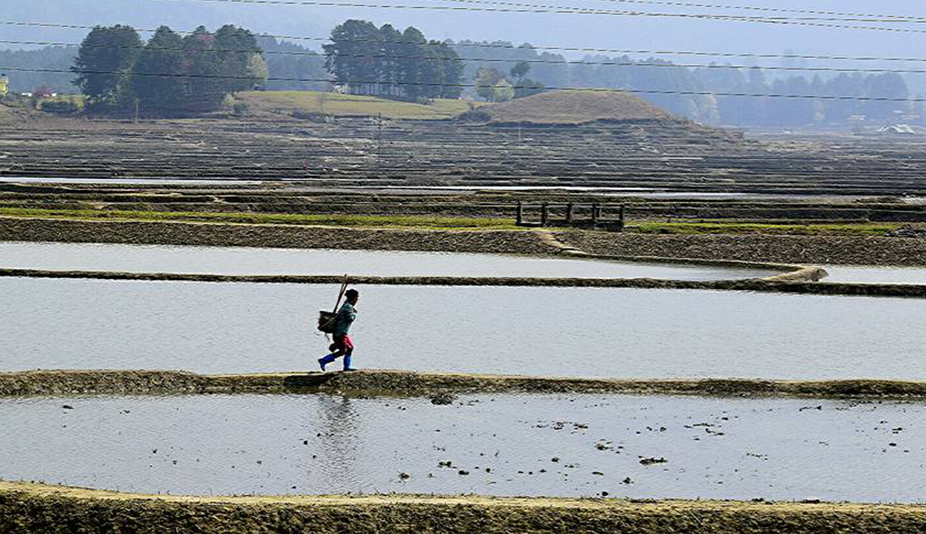Organic farming a value chain addition for Arunachal

Some of the greatest rivers on earth calls the subcontinent their home and hence makes the region very conducive to agriculture. Farming is one of the oldest economic activity in our country and agriculture is the primary source of livelihood for almost about 58 per cent of India’s population.
However, in the past few decades, we have seen over-dependence on the use of artificial chemicals like pesticides and fertilizers accompanied with hybrid seeds for bountiful and sturdier harvest. Though there has been an increase in production, the outcome manifested as a decrease in the fertility of the land as well as low-grade grains and vegetables.
With the growing rate of people’s concern over the healthy living, which includes healthy eating behaviour and protecting the environment, organic products and supplies are getting higher in demands and therefore, farmers are also opting sustainable measures such as organic farming practices.
#OrganicFarming

Organic farming is a farming method which avoids the use of chemical and synthetic based fertilizers, pesticides, antibiotics and feed additives. It depends on the practices of growing healthier and vigorous crops through traditional methods that were used by our ancestors such as crop rotation, animal manures, biological ways of supplying nutrients to the soil and also protecting the plants. All these efforts involve growing and nurturing crops and producing nutrient-rich crops in a sustainable, eco-friendly and pollution-free environment.

Why is organic farming essential?
Organic farming is of growing importance due to some serious risk to health and environment and is adopted in several developed countries.
The practice of organic farming reduces soil erosion, increase soil fertility, conserve water, reduce pollution, and use less energy. Farming without pesticides is also best for neighbourly birds and animals as well as people who live nearby the farms. The growing demands of the organic products in the market, also means that farmers are earning well and are able to secure health and education for their family.
Extensive farming practices over the years have considerably ushered in the degradation of the soil and the land. It has also vastly impacted the health of the crops and to those who consume them. The excessive use of pesticides to protect the crop from insects has contaminated the underground drinking water which outcomes as an apprehensive cause of the strained diseases.
These few critical issues hold some of the reasons to be heedful of the way we grow our food and products that we consume. In such predicament, organic farming seems to be the ideal resolution.
Organic farming in Arunachal Pradesh
The economy of the region is mainly based on agriculture and different regions have different styles of farming. Arunachal Pradesh, in particular, is known for using the traditional system of cultivation i.e. primitive subsistence farming. The subsistence system is an indigenous practice which uses the ‘cut and burn’ technique.
Jhum cultivation and terrace farming are two major forms of farming practices commonly used by the farmers in Arunachal Pradesh. In Jhum cultivation, lands are composed by cutting down or burning the unwanted cultivation. Once the crops are grown and harvested, the farmers burn the land. They then move to a clear patch of land for a new batch of cultivation and as a result, the land gains back its fertility, naturally. While in Terrace farming, multiple cultivated steps or terraces are shaped on the slopes of hills and mountains to prevent soil erosion and washing away of soil nutrients.
Because no fertilizers are used for cultivation, the primitive subsistence method yields good quality crops and also retains the properties of the soil.
While most tribes practice subsistence and shifting cultivation, the Apatanis practice follow a distinctive system of Canal irrigation of paddy cum agriculture with an intricate network of canals and channels laid across the entire fields. The paddy fields in the entire valley are irrigated by a small river through a network of irrigation channels. The idea of this system is to make certain that the water is reinstated back to the river to irrigate more fields in the valley.
The topography and agro-climatic of the state are virtuous for the cultivation of Rice, Millet, Wheat, Pulses, Sugar cane and Potatoes. The state also produces tropical and sub-tropical fruits such as Apple, Pineapple, Orange, Pear, Plums, and Chestnut etc. Aromatic and Medicinal plants like ginger, cardamom, bamboo, spices and mushroom etc. are also produced in ample amount thus, also promoting Horticulture. Kiwi from Arunachal Pradesh is known to be of better quality and organic.
The road ahead in organic farming
Arunachal Pradesh has become the second largest producer state of large or black cardamom in India with the help of organic farming. Also, Tage Rita’s “Naara Aaba”, the first ever pure and organic kiwi wine produced in India is manufactured at Ziro: which has graciously led Ziro on the World Winery map. Basamlu Krisikro of Wakro, fondly known as ‘tea lady’ has encouraged people to give up Poppy plantation and convinced people that organic tea plantation could be an alternative source of sustainable income.
The rural farmers should adopt organic farming methods to uplift the production of crops which will ensure the protection of the environment, the health of consumers and also generate assistance in income. India has a huge potential for the production and consumption of organic products and efforts should be made by progressive farmers of Arunachal Pradesh to promote organic farming into the state in a phase-wise manner. For the existing state policy on organic farming in details, please visit: http://www.agri.arunachal.gov.in/filesdoc/e109ugpwub3.pdf



Total Comments - 0